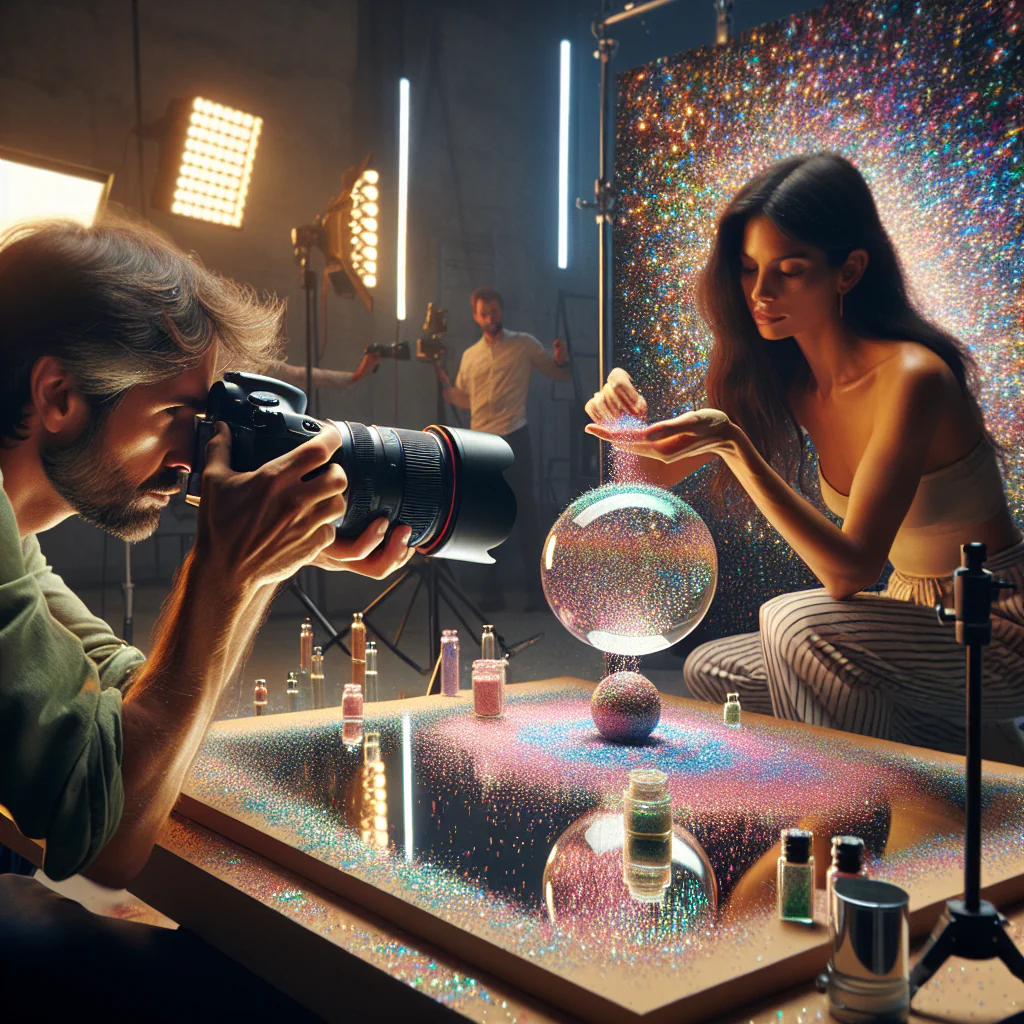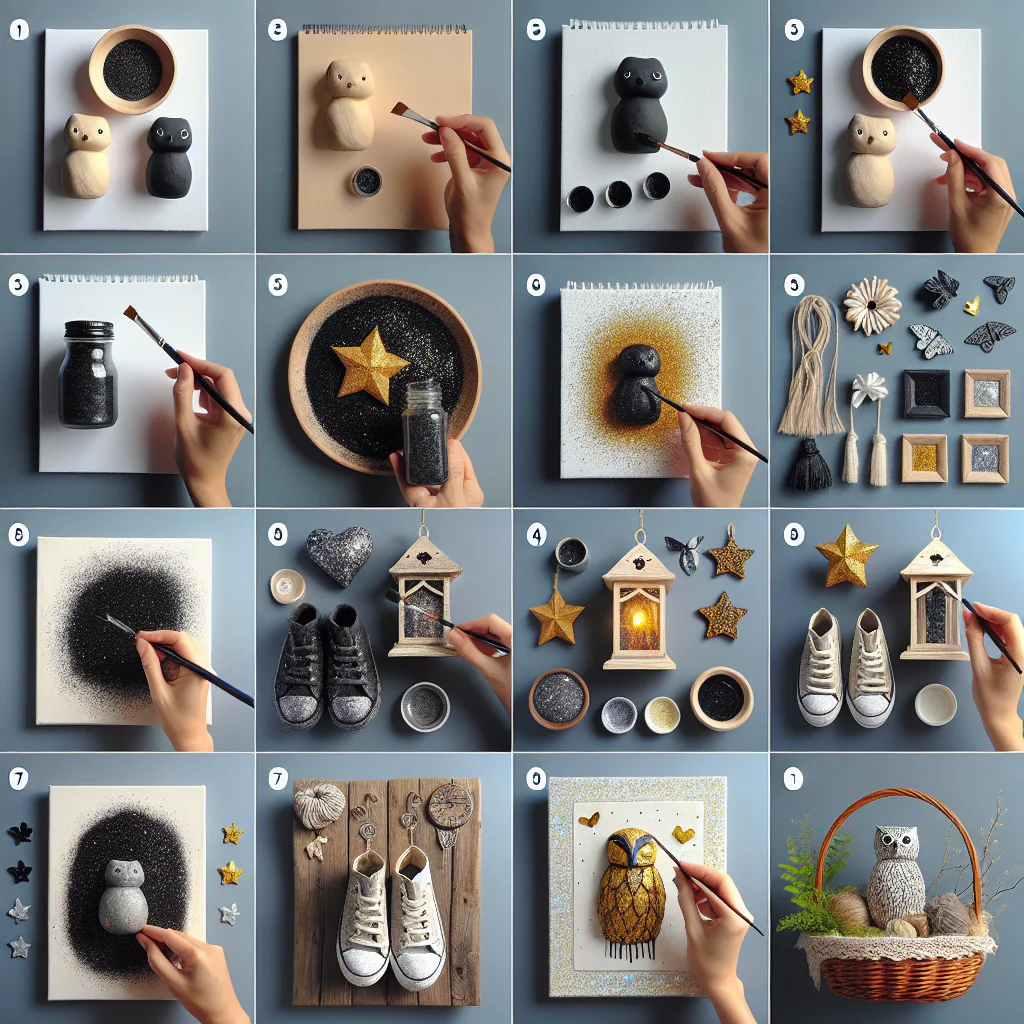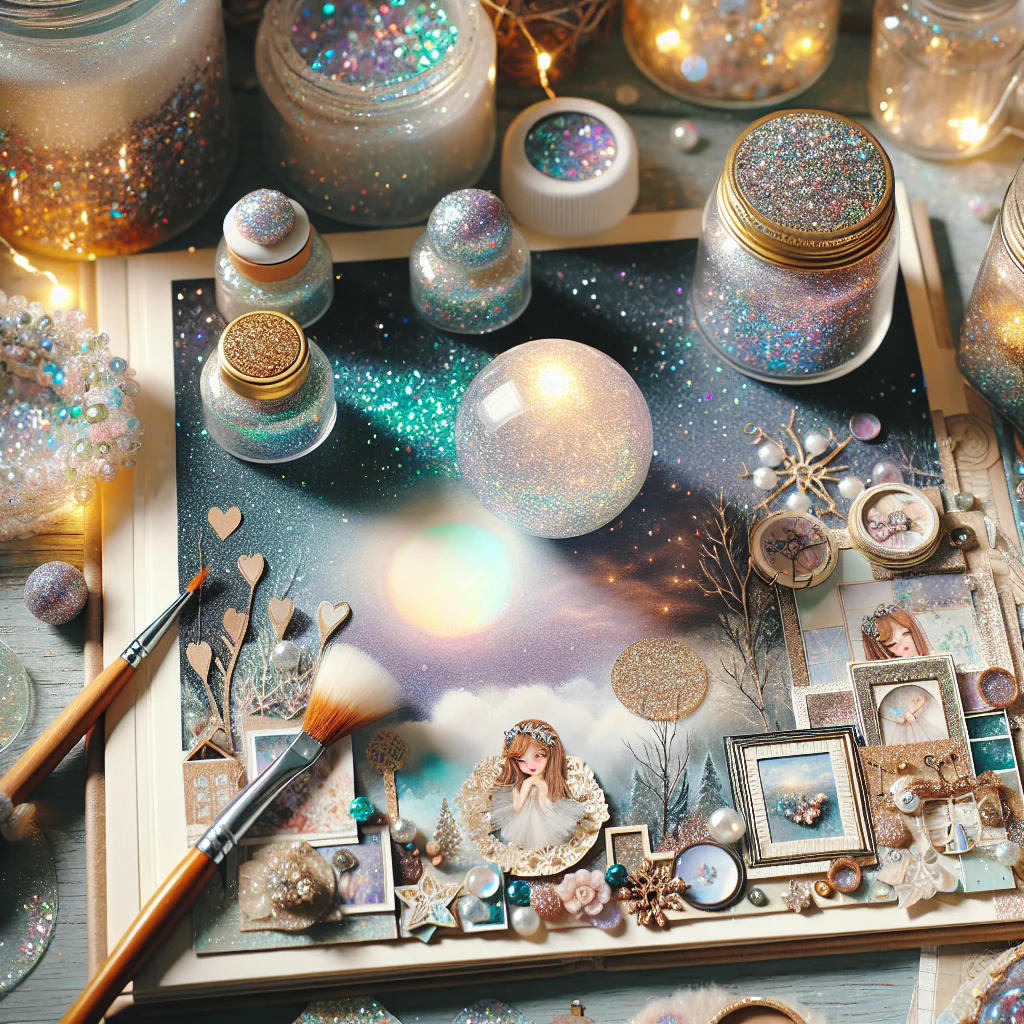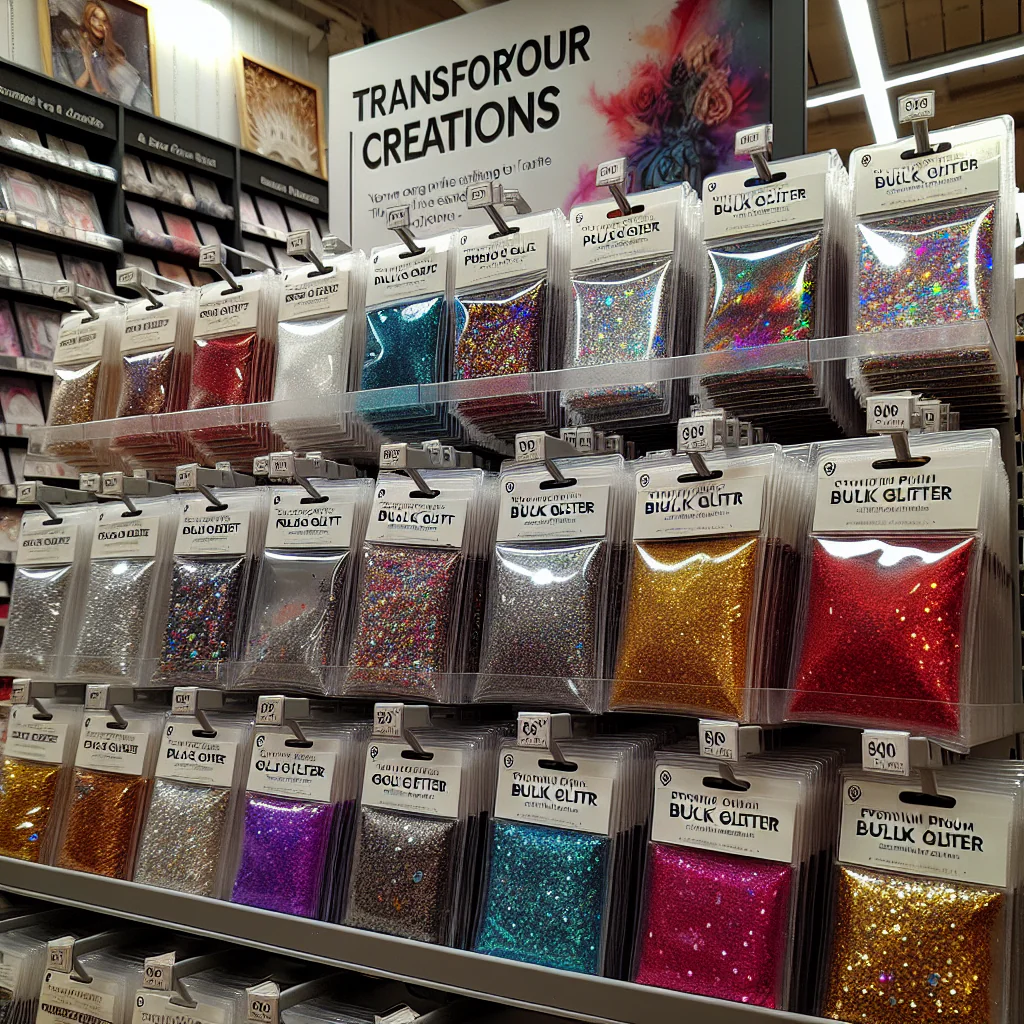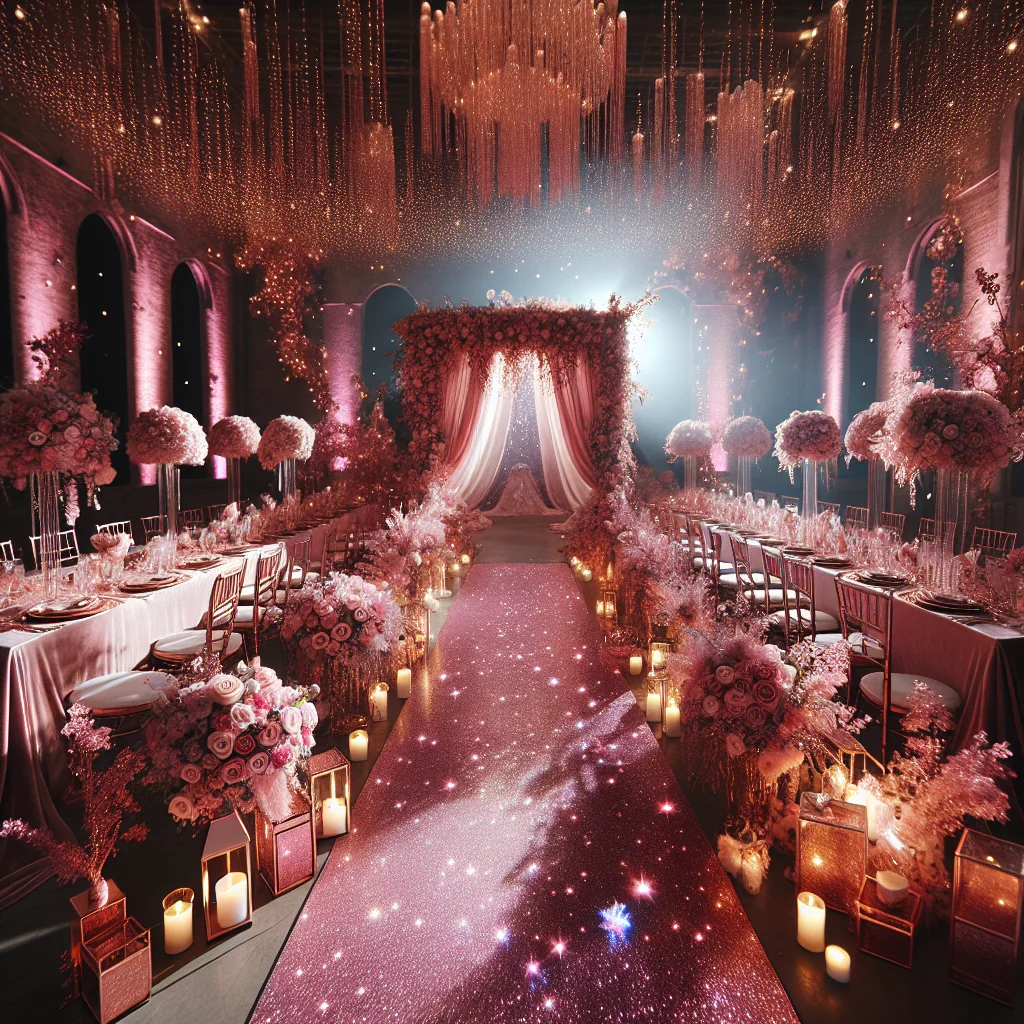-
Table of Contents
“Transforming Light into Art: Photographers Elevate Their Shoots with Holographic Glitter Magic.”
Introduction
Photographers are increasingly incorporating Holographic Glitter into their shoots to create visually stunning and dynamic images. This innovative material adds a unique dimension to photography, reflecting light in various colors and patterns that enhance the overall aesthetic. By strategically placing Holographic Glitter in the foreground or background, photographers can achieve a dreamy, ethereal effect that captivates viewers. Whether used in portrait, fashion, or product photography, Holographic Glitter serves as a versatile tool for adding texture, depth, and a touch of whimsy to visual storytelling. Its ability to interact with light makes it a popular choice for creating eye-catching compositions that stand out in a crowded visual landscape.
Holographic Glitter: Transforming Portrait Photography
In the realm of portrait photography, the quest for unique and captivating visuals has led many photographers to explore innovative techniques and materials. One such material that has gained popularity in recent years is Holographic Glitter. This versatile medium not only adds a touch of whimsy and magic to images but also enhances the overall aesthetic appeal, transforming ordinary portraits into extraordinary works of art. By understanding how Holographic Glitter can be effectively utilized, photographers can elevate their creative expression and engage their audience in new and exciting ways.
To begin with, Holographic Glitter is characterized by its ability to reflect light in a spectrum of colors, creating a dazzling effect that can be both subtle and striking. When incorporated into portrait photography, it can serve multiple purposes. For instance, photographers often use it as a background element, scattering it across a surface to create a shimmering backdrop that draws the viewer’s eye. This technique not only adds depth to the composition but also introduces an element of playfulness, inviting the audience to explore the image further. The interplay of light and color generated by the glitter can evoke a sense of wonder, making the portrait more engaging and memorable.
Moreover, Holographic Glitter can be applied directly to the subject, enhancing their features and adding a layer of visual interest. Photographers may choose to sprinkle it on the skin, hair, or clothing of their models, creating a radiant effect that catches the light beautifully. This application requires careful consideration, as the amount and placement of glitter can significantly impact the final image. A delicate touch can result in a soft, ethereal glow, while a more generous application can create a bold statement. By experimenting with different techniques, photographers can discover the right balance that complements their artistic vision.
In addition to its aesthetic qualities, Holographic Glitter also offers practical advantages in portrait photography. For instance, it can be used to create a sense of movement within a still image. When captured in motion, the glitter can produce a dynamic effect, as it reflects light in various directions, adding an element of energy to the composition. This technique is particularly effective in capturing the essence of a subject’s personality, allowing the viewer to connect with the image on a deeper level. Furthermore, the use of Holographic Glitter can help to mask imperfections in the background or subject, providing a creative solution for photographers seeking to enhance their work without extensive post-processing.
Transitioning from traditional methods to incorporating Holographic Glitter requires a shift in mindset for many photographers. It encourages them to think outside the box and embrace experimentation. By integrating this medium into their shoots, photographers can develop a signature style that sets them apart from their peers. The versatility of Holographic Glitter allows for endless possibilities, whether it be in fashion photography, editorial shoots, or personal projects. As photographers continue to push the boundaries of their craft, the use of Holographic Glitter stands as a testament to the power of creativity and innovation in portrait photography.
In conclusion, Holographic Glitter has emerged as a transformative element in portrait photography, offering both aesthetic and practical benefits. By skillfully incorporating this medium into their work, photographers can create visually stunning images that resonate with viewers. As the art of photography evolves, embracing such innovative techniques will undoubtedly lead to new artistic horizons, inspiring both photographers and their audiences alike.
Creative Uses of Holographic Glitter in Product Shoots
In the realm of product photography, the quest for unique and eye-catching visuals is paramount. Photographers continually seek innovative techniques to elevate their work, and one such method that has gained popularity is the use of Holographic Glitter. This versatile material not only adds a touch of glamour but also enhances the overall aesthetic of product images, making them more appealing to potential consumers. By incorporating Holographic Glitter into their shoots, photographers can create a captivating interplay of light and color that draws the viewer’s attention.
To begin with, Holographic Glitter serves as an effective tool for creating dynamic backgrounds. When strategically placed, it can transform a simple backdrop into a vibrant canvas that complements the product being showcased. For instance, a beauty product can be photographed against a Holographic Glitter background, which reflects light in various ways, thereby enhancing the product’s features. This technique not only adds depth to the image but also creates a sense of movement, making the product appear more lively and engaging. As a result, the viewer is more likely to be captivated by the image, increasing the likelihood of a purchase.
Moreover, Holographic Glitter can be utilized to highlight specific aspects of a product. By sprinkling glitter around the product or incorporating it into the composition, photographers can draw attention to particular details, such as textures or colors. For example, when photographing jewelry, a subtle layer of Holographic Glitter can accentuate the sparkle of gemstones, creating a visually stunning effect that emphasizes the product’s luxury. This method not only enhances the visual appeal but also communicates the quality and craftsmanship of the item, thereby influencing consumer perception.
In addition to its aesthetic benefits, Holographic Glitter can also be employed to create thematic concepts in product photography. For instance, during seasonal campaigns, photographers can use glitter to evoke a festive atmosphere. By incorporating holographic elements into holiday-themed shoots, they can convey a sense of celebration and joy, which resonates with consumers during special occasions. This thematic approach not only enhances the emotional connection between the product and the viewer but also reinforces brand identity, making the images more memorable.
Furthermore, the versatility of Holographic Glitter allows for experimentation with various lighting techniques. When illuminated, Holographic Glitter reflects light in a myriad of colors, creating a mesmerizing effect that can be manipulated to suit the photographer’s vision. By adjusting the angle and intensity of the light source, photographers can achieve different moods and atmospheres, ranging from whimsical to sophisticated. This adaptability makes Holographic Glitter an invaluable asset in a photographer’s toolkit, enabling them to craft images that are not only visually striking but also aligned with the brand’s message.
In conclusion, the creative uses of Holographic Glitter in product shoots are vast and varied. By enhancing backgrounds, highlighting product features, establishing thematic concepts, and allowing for innovative lighting techniques, photographers can significantly elevate their work. As the demand for visually compelling content continues to grow, the incorporation of Holographic Glitter offers a unique solution for capturing the attention of consumers. Ultimately, this technique not only enriches the visual narrative of product photography but also plays a crucial role in driving consumer engagement and sales.
Enhancing Fashion Photography with Holographic Glitter Effects
In the realm of fashion photography, the quest for innovative techniques to elevate visual storytelling is ever-present. One such technique that has gained traction in recent years is the use of Holographic Glitter effects. This unique approach not only adds a layer of depth and intrigue to images but also enhances the overall aesthetic appeal, making it a favored choice among contemporary photographers. By incorporating Holographic Glitter into their shoots, photographers can create mesmerizing visuals that captivate audiences and convey a sense of modernity and creativity.
To begin with, Holographic Glitter possesses a distinctive quality that sets it apart from traditional glitter. Its ability to refract light in multiple directions results in a spectrum of colors that shift and change depending on the angle of view. This dynamic characteristic allows photographers to play with light in innovative ways, transforming ordinary scenes into extraordinary visual experiences. When strategically placed, Holographic Glitter can create a shimmering backdrop or serve as an accent that draws attention to specific elements within the frame. This versatility makes it an invaluable tool for fashion photographers aiming to highlight garments, accessories, or even the model’s features.
Moreover, the application of Holographic Glitter is not limited to mere decoration; it can also serve as a storytelling device. For instance, in a fashion shoot that aims to evoke a sense of whimsy or fantasy, the use of Holographic Glitter can enhance the narrative by adding an ethereal quality to the images. Photographers can experiment with different placements and concentrations of glitter to evoke various moods, from playful and vibrant to elegant and sophisticated. This ability to manipulate the emotional tone of a photograph is crucial in fashion photography, where the goal is often to convey a specific lifestyle or aesthetic.
In addition to its aesthetic and narrative potential, Holographic Glitter also offers practical advantages during the shooting process. Its lightweight nature makes it easy to apply and remove, allowing photographers to experiment with different looks without significant time investment. Furthermore, the glitter can be used in conjunction with various lighting techniques to achieve different effects. For example, when illuminated by soft, diffused light, Holographic Glitter can create a subtle, dreamy atmosphere, while harsh lighting can produce striking contrasts that emphasize the glitter’s reflective properties. This adaptability enables photographers to tailor their approach based on the desired outcome, ensuring that each shoot is unique and aligned with the creative vision.
As fashion photography continues to evolve, the integration of Holographic Glitter effects represents a broader trend towards experimentation and innovation. Photographers are increasingly seeking ways to differentiate their work in a saturated market, and the use of unconventional materials like Holographic Glitter allows for the creation of distinctive images that stand out. Additionally, as social media platforms become primary channels for sharing visual content, the demand for eye-catching imagery has never been higher. Holographic Glitter, with its ability to create striking visuals that resonate with viewers, is well-suited to meet this demand.
In conclusion, the use of Holographic Glitter in fashion photography is a testament to the power of creativity and innovation in visual storytelling. By harnessing its unique properties, photographers can enhance their work, creating images that are not only visually stunning but also rich in narrative potential. As this trend continues to gain momentum, it is likely that Holographic Glitter will remain a staple in the toolkit of fashion photographers, inspiring new generations to explore the boundaries of their craft.
Q&A
1. **Question:** What is Holographic Glitter, and why do photographers use it in shoots?
**Answer:** Holographic Glitter is a type of glitter that reflects light in a spectrum of colors, creating a shimmering effect. Photographers use it to add visual interest, enhance the mood of a shoot, and create unique backgrounds or props that catch the light.
2. **Question:** How can Holographic Glitter be incorporated into a photoshoot?
**Answer:** Holographic Glitter can be sprinkled on surfaces, used in makeup for models, or incorporated into props and backdrops. It can also be used in creative lighting setups to produce dynamic reflections and highlights in the images.
3. **Question:** What are some tips for effectively using Holographic Glitter in photography?
**Answer:** To effectively use Holographic Glitter, photographers should consider the lighting conditions to maximize its reflective properties, use it sparingly to avoid overwhelming the subject, and experiment with different angles to capture the best effects.
Conclusion
Photographers use Holographic Glitter in shoots to create dynamic visual effects, enhance the aesthetic appeal of images, and add a sense of depth and texture. By strategically incorporating Holographic Glitter, they can manipulate light and reflections, resulting in captivating and unique compositions that draw the viewer’s attention. This technique is particularly effective in fashion, product, and portrait photography, where the interplay of light and color can elevate the overall impact of the visual narrative. Ultimately, Holographic Glitter serves as a versatile tool that allows photographers to push creative boundaries and produce striking imagery.




